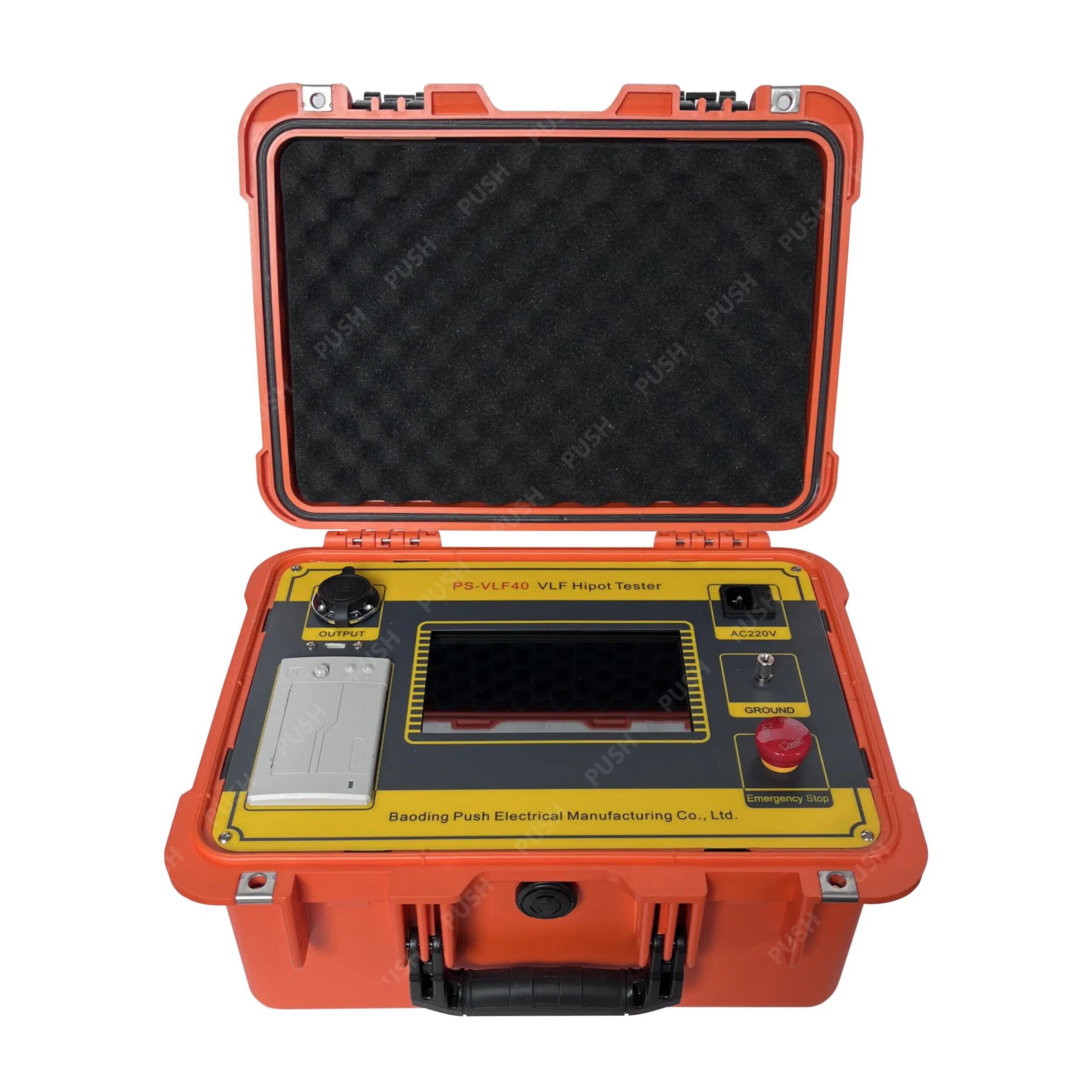High-voltage AC hipot testers like the "80kV High Voltage AC HV VLF Hipot Tester" generate and deliver high-voltage AC output through a series of components and mechanisms. The primary purpose is to test the insulation and dielectric strength of electrical equipment and cables.
Here's an overview of how these testers work:
-
High-Voltage Power Source: The tester is equipped with a high-voltage power source, which can be a transformer or resonant test system. This source generates the high-voltage AC that will be applied to the equipment under test.
-
Transformer: In some cases, a transformer is used to step up the voltage to the desired level. The transformer's primary winding is connected to a lower voltage source, while the secondary winding provides the high-voltage AC output.
-
Frequency Control: These testers often operate at very low frequencies (VLF), typically in the range of a few kilohertz. VLF testing is preferred because it provides more accurate and meaningful results for cable and insulation testing.
-
Safety Mechanisms: Hipot testers are equipped with safety features such as interlock systems and emergency shutdown mechanisms to protect the operator and equipment.
-
High-Voltage Output Terminal: The high-voltage output terminal is where the high-voltage AC is applied to the equipment being tested. It's important to have appropriate safety measures in place to ensure that the high voltage does not pose a hazard to the operator.
-
Controls and Displays: These testers have control panels and displays that allow the operator to set the test voltage, frequency, and duration. They can also monitor the test in real-time.
-
Test Procedure: The operator connects the equipment or cable to be tested to the high-voltage output terminal. The tester is then set to the desired test voltage and frequency. The test is typically applied for a specific duration to assess the integrity of the insulation.
-
Test Result Analysis: During and after the test, the hipot tester monitors the equipment's response to the high voltage. Any breakdown or failure in the insulation will be detected and can be recorded for analysis.
-
Data Recording: Many modern hipot testers are equipped with data recording and analysis capabilities, allowing the user to store and review test results for compliance and troubleshooting.
The key to the operation of these testers is to subject the equipment to a high-voltage stress, which helps identify potential weaknesses in the insulation or dielectric material. By doing so at very low frequencies (VLF), the test can simulate the stresses that the equipment would experience during its normal operation.
It's important to note that operating high-voltage AC hipot testers should be performed by trained and qualified personnel to ensure safety and accurate testing results.
What industries or sectors commonly use the "80kV High Voltage AC HV VLF Hipot Tester" for their testing needs?
The "80kV High Voltage AC HV VLF Hipot Tester" is a specialized testing instrument designed for assessing the insulation and dielectric strength of electrical equipment, particularly cables. 80kv High Voltage Ac Hv Vlf Hipot Tester It finds applications in various industries and sectors where the reliability and safety of electrical systems are crucial.
Common industries and sectors that use such hipot testers include:
-
Power Utilities: Power utilities use hipot testers to assess the insulation integrity of high-voltage power cables, transformers, and other electrical equipment. Ensuring the reliability of power distribution systems is paramount in this industry.
-
Cable Manufacturing: Manufacturers of high-voltage power cables and wiring harnesses employ hipot testers to verify the quality and reliability of their products before they are deployed in power transmission and distribution systems.
-
Aerospace and Aviation: Aircraft and spacecraft often rely on complex electrical systems. Hipot testing is employed to verify the integrity of wires and cables used in avionics and electrical components to ensure safe and reliable operation.
-
Telecommunications: Telecommunication providers use hipot testers to evaluate the integrity of cables and equipment used in their network infrastructure. Ensuring signal reliability is vital in this sector.
-
Railway and Transportation: The railway industry uses hipot testers for evaluating the safety and performance of electrical components and systems, including signaling equipment, traction systems, and power distribution.
-
Renewable Energy: The renewable energy sector employs hipot testers to assess the insulation of cables and electrical components in wind turbines, solar power systems, and other renewable energy installations.
-
Manufacturing and Industrial: Various manufacturing and industrial facilities use hipot testers to verify the insulation and safety of electrical equipment and systems, especially in applications involving high voltage.
-
Research and Development: Laboratories and research institutions use hipot testers for testing and experimentation, particularly in studies related to high-voltage and electrical insulation.
-
Electrical Maintenance and Service: Electrical maintenance and service companies utilize hipot testers to assess the safety and reliability of electrical systems in commercial and industrial facilities.
-
Healthcare: In the healthcare sector, hipot testing may be used to ensure the safety of medical devices, such as diagnostic and imaging equipment.
-
Educational Institutions: Educational institutions with electrical engineering programs may use hipot testers for training and research purposes.
-
Safety Compliance: Many industries use hipot testing as part of safety compliance and quality assurance measures to ensure their electrical systems meet industry standards and regulations.
The specific application and requirements of hipot testing can vary within these industries, and the "80kV High Voltage AC HV VLF Hipot Tester" is a versatile tool that can be adapted to different testing scenarios, helping to ensure the safety and reliability of electrical equipment and systems.







